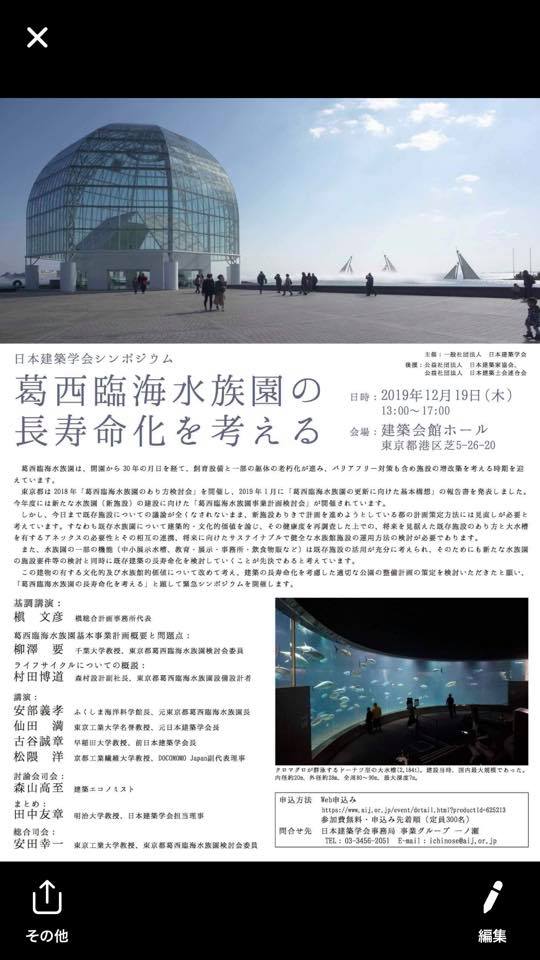
葛西臨海公園はまだまだモダンであり、美しい公園 建替え議論などはありえない。
葛西臨海公園は学生時代にできた建築家( 谷口吉生 氏)の才能を目の当たりにできた思い入れのある建築であり公園です。単なる水族館ではない、建築や空間を楽しむことができ、カフェもモダンだった。メインの外観はガラスの箱で人々が建物に浮遊する様を感じられ、視線の展開が感じられて、ランドスケープを楽しむ導線になっている。いまだに子供と行くことがある。デザインがしっかりしていると素材の経年が発生しても骨格空間は時の経過を感じさせないものだ。
This is an emergency symposium titled “Consider the sustainability of Tokyo Sea Life Park”from 13:00 on December 19 at Architectural institute of Japan, shiba,Minatoku.
Its aim is to request the Tokyo Metropolitan Government to consider the sustainability of the existing aquarium and create an appropriate future masterplan for Tokyo Sea Life Park, consisting of main aquarium, freshwater aquarium and its surrounding park.
The aquaria, designed by Yoshio Taniguchi, a world-renowned architect, who also designed The Museum of Modern Art, New York, and The Okura Tokyo, are in danger of being demolished.
Tokyo Sea Life Park was opened in 1989. The aquarium became now Tokyo’s most valuable cultural and recreational facility after it has welcomed 55 million citizens since its opening.
After 30 years of its construction, the aquarium has problems to be solved, such as deterioration of rearing equipment, and insufficiency of accessibility for the elderly and disabled.
Upon those issues, Tokyo Metropolitan Government held a committee in 2018 to investigate the sustainability of Tokyo Sea Life Park and drew up a report. The Government also held a meeting of the investigation committee of business planning for Tokyo Sea Life Park in this year.
However, the meeting of the investigation committee was held on the assumption that the existing aquarium does not function as an aquarium any more due to its deterioration. The government is even planning to build a new aquarium without any discussion on the future of the existing aquarium.
Tokyo Metropolitan Government has not mentioned anything clearly yet, however, it is most likely that the existing aquarium will be demolished
In order to sustain the existing building, it is necessary now;
– to reinvestigate the function of the existing aquarium,
– to discuss its value as architecture and culture,
– to consider use of the existing aquarium in the future, and
– to examine sustainable and sound operation policy of the aquarium.
By doing the above, we can follow Tokyo Metropolitan Government’s environmental policy, “Creating a Sustainable City”.

